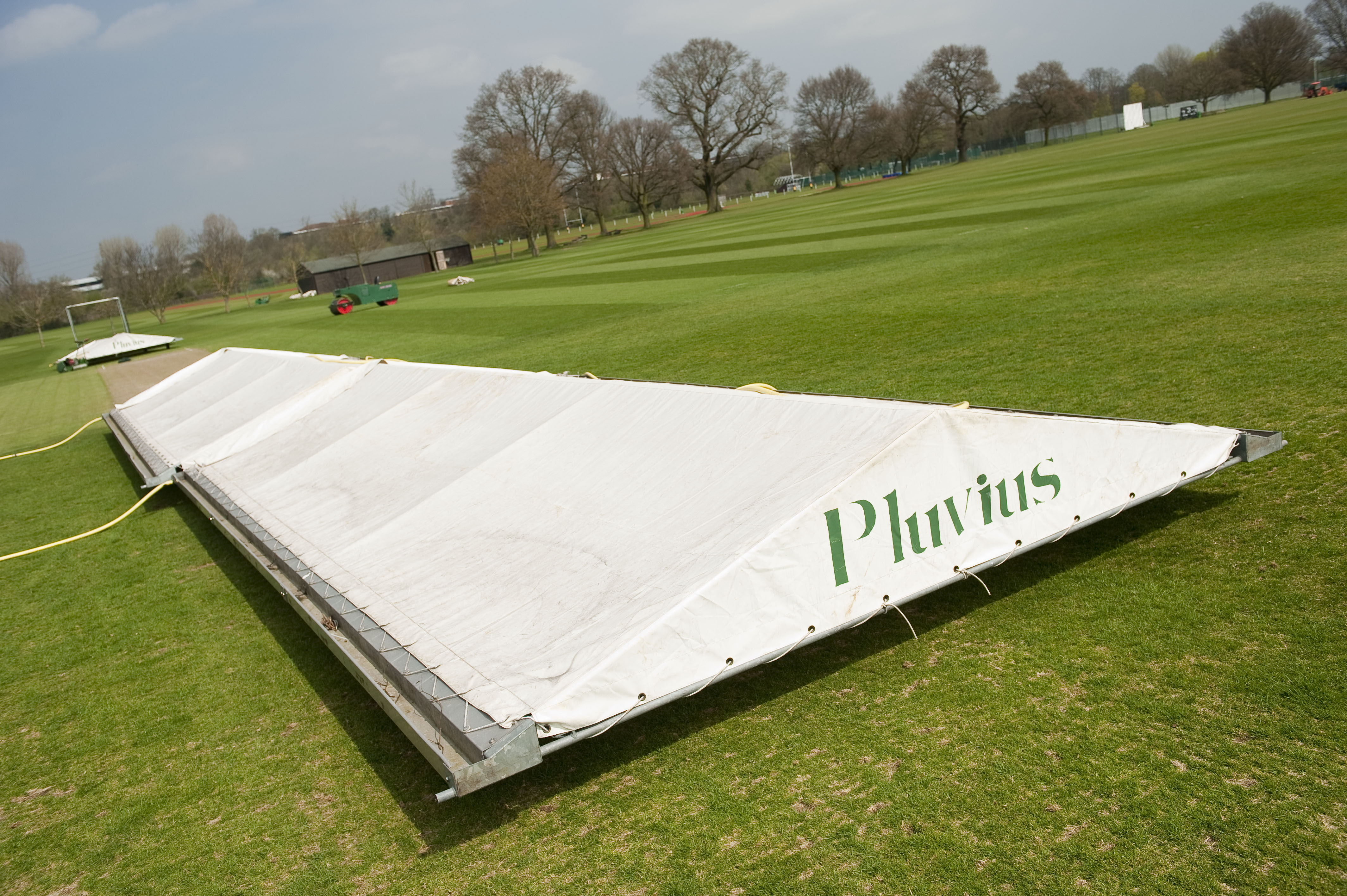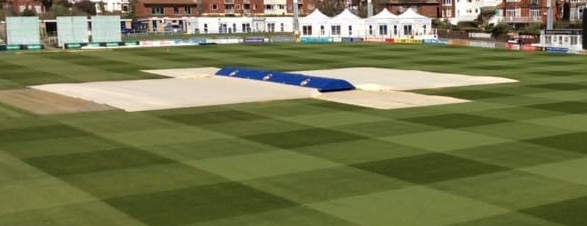There are principally two types of cover:
- Flat sheet covers.
- Mobile wheeled covers (sometimes called dome covers)
There is a third – the Hover Cover – but these tend to be limited to Test Match grounds so we won’t cover them here.
Flat Sheet Covers
Flat sheet covers are used as side sheets to cover the square either side of the pitch and to cover run ups. They can also be used to cover pitches. They have the advantage of being easier to deploy over larger areas if it is not windy but can be heavy, particularly when wet so need an appropriate number of people to move them.
Flat sheets are usually pegged and/or weighed down with ballast such as planks of wood, scaffold poles, sandbags, or old tyres. Pegs should be formed from a minimum of 5 mm steel to resist bending when hammered into compacted cricket surfaces or stony outfields. There should be a sufficient number to go around the whole sheet.
Mobile Covers
Mobile covers normally come in three or four sections and are wheeled into place over the match pitch. The covers are usually tarpaulin over a domed or triangular framework connected to four wheels (heavier, more durable types may be formed of corrugated plastic, steel roofing materials or fibreglass). The frames carry gutters that collect the water off the sheet and divert it into hoses which can be deployed over the outfield or even into pitch drains to divert water to more freely draining areas.
Mobile covers may need to be held in place with ballast or guy ropes during windy conditions.



 Tweet
Tweet